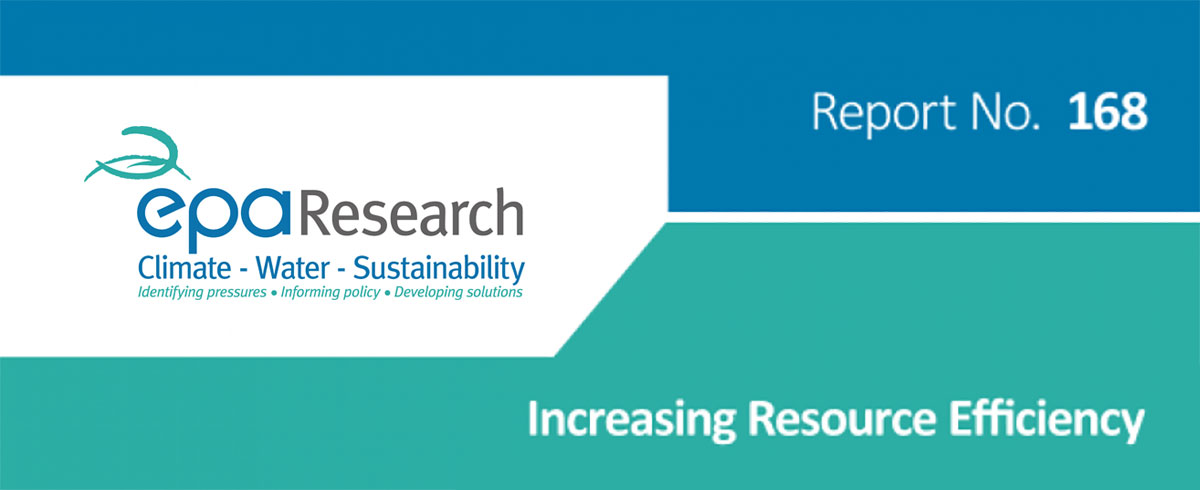Wastewater treatment is a resource-intensive process that utilises several inputs, such as energy, chemicals and water, to produce an effluent that meets designated environmental standards. Driven by environmental regulations, the focus of wastewater treatment plants (WWTPs) has traditionally been the quality of the effluent and not necessarily the energy or resource efficiency of the plant. Regulations and penalties provide incentives to meet environmental effluent standards; however, to date, there are no such analogous penalties or incentives to expedite a focus on resource efficiency. It is imperative to recognise that resource utilisation and, indeed, sludge management also have significant environmental consequences, and therefore WWTP performance should be viewed holistically. This research sought to address this challenge by adopting a multi-pronged approach to audit and benchmark the resource efficiency of Irish WWTPs, including the use of life-cycle analysis (LCA) and exergy analysis. Ten representative Irish WWTPs were audited in detail. The plants varied in scale, with regard to their design capacities [which were quantified in terms of units of population equivalent (PE)], from 600PE to 186,000PE. Simultaneous energy and resource consumption and water quality audits were undertaken, resulting in the development of benchmarking tools and auditing methodologies, and the detailed performance evaluation of the plants in order to support better resource management and to provide baseline data on the holistic performances of the WWTPs. This work involved several key considerations: (1) the selection of representative plants; (2) the development of an appropriate auditing methodology; (3) the lack of functioning and appropriate monitoring equipment, particularly flow meters; (4) the access to plant data and water quality samples; (5) the identification of essential data requirements for each of the individual approaches and the subsequent development and implementation of data acquisition strategies; and (6) the determination of metrics that allow a fair comparison across WWTPs despite the many variables, such as scale, influent quality, discharge requirements, technology and nutrient removal requirements, that exist. To read the full report please click here.
Congratulations to our Water Institute Principal Investigators on the publication of their Report
No Comments

Recent Posts
- DCU WI uses biomimicry to develop coating to protect ships and equipment
- Postdoctoral researcher in mechatronics engineering
- Resounding Success: Waves of Change Conference by DCU Water Institute & Invent Receives Rave Reviews from Attendees
- Postdoctoral Researcher Role – Ecosystem Modelling
- Conference: Waves of Change: Innovative Solutions for a Water-Wise World – open for registration
Recent Comments
- A Test Platform deployed in Dublin Bay for The Next Evolution in Materials and Models for Ocean Energy Project (NEMMO) - DCU Water Institute on The Next Evolution in Materials and Models for Ocean Energy. NEMMO Project
- Brian Mac Domhnaill on Friday March 5th, 2021 Water Blog
- STEP Enquiries on Wednesday September 30th, 2020 Water Blog
- Brian Mac Domhnaill on Wednesday September 30th, 2020 Water Blog
- Thursday September 24th, 2020 Water Blog - DCU Water Institute on Monday 20th July, 2020 Water Blog
Archives
- January 2024 (1)
- December 2023 (1)
- November 2023 (2)
- October 2023 (3)
- September 2023 (11)
- August 2023 (3)
- June 2023 (2)
- May 2023 (4)
- April 2023 (1)
- March 2023 (5)
- February 2023 (4)
- January 2023 (3)
- November 2022 (2)
- October 2022 (6)
- September 2022 (4)
- August 2022 (3)
- July 2022 (8)
- June 2022 (2)
- May 2022 (2)
- April 2022 (1)
- March 2022 (7)
- February 2022 (5)
- January 2022 (2)
- December 2021 (5)
- November 2021 (7)
- October 2021 (2)
- September 2021 (3)
- August 2021 (3)
- July 2021 (2)
- June 2021 (1)
- May 2021 (5)
- April 2021 (3)
- March 2021 (18)
- February 2021 (14)
- January 2021 (18)
- December 2020 (4)
- November 2020 (16)
- October 2020 (26)
- September 2020 (18)
- August 2020 (26)
- July 2020 (26)
- June 2020 (32)
- May 2020 (29)
- April 2020 (39)
- March 2020 (6)
- February 2020 (4)
- January 2020 (8)
- December 2019 (8)
- November 2019 (12)
- October 2019 (11)
- September 2019 (10)
- August 2019 (16)
- July 2019 (3)
- June 2019 (10)
- May 2019 (15)
- April 2019 (6)
- March 2019 (8)
- February 2019 (6)
- January 2019 (2)
- December 2018 (2)
- November 2018 (4)
- October 2018 (2)
- September 2018 (2)
- August 2018 (4)
- July 2018 (4)
- June 2018 (1)
- May 2018 (5)
- April 2018 (1)
- March 2018 (5)
- February 2018 (2)
- December 2017 (1)
- November 2017 (1)
- October 2017 (1)
- September 2017 (1)
- July 2017 (4)
- June 2017 (5)
- May 2017 (3)
- March 2017 (7)
- February 2017 (4)
- January 2017 (2)
- December 2016 (1)
- October 2016 (1)
- September 2016 (1)
- August 2016 (1)
- June 2016 (2)
- May 2016 (2)
- February 2016 (1)
- January 2016 (1)
- December 2015 (3)
- November 2015 (1)
